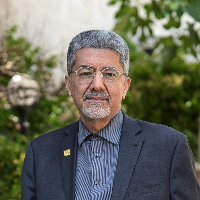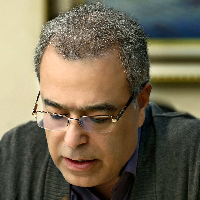Scale analysis of urban regeneration projects and its effects on the quality of life of residents with emphasis on the Iran experience
One of the most important challenges in today’s metropolises is the existence of unhealthy, poor urban neighborhoods in the peripheries. A series of regeneration policies and plans have sought to meet such a challenge over the twentieth century to provide a better quality of life for residents of such impoverished urban spaces. Such measures have hardly been successful, however. This study has assumed that a major reason for such failures has been the lack of concern for scale in urban regeneration plans and schemes. Accordingly, two main questions have been raised here. The first pertains to the reason why the concept of scale should lie at the heart of an urban regeneration plan and to the way in which such a focus can improve plans and upgrade the quality of life in an urban residence. The second question concerns the status of urban regeneration based on the criteria and indicators considered in this study and the effects it can have on project efficiency and target residents’ quality of life.
Theoretical Framework
The theoretical framework of this study has been set only to extract the indicators and criteria of the survey (questionnaire) and to measure the quality of life in the target samples. Therefore, the intellectual approaches of sustainable urban regeneration, right scale theory, expectation-efficiency model, sustainable place-making, and collision effectiveness theory have been considered in this research simply as theoretical approaches supporting the survey. However, the arguments made in these approaches and the set of controversies that can arise about each along with the relationships between them go far beyond the references cited in this article. After all, the main components of the questionnaire for assessment of the quality of life in the target samples include the theoretical approach of the right scale, providing the required coordination between the elements, the theoretical approach of collision effectiveness, providing effectiveness, the theoretical approach of sustainable place-making, affecting target residents’ quality of life, and the theoretical approach of expectation-efficiency, affecting satisfaction.
The present applied research has been designed as a systematic logical plan seeking to maximize scientific validity in the definitions, criteria, indicators, procedures, and methods of data collection and analysis and in the information and extraction and inference of the findings. Two contextual methodologies have been adopted to analyze the concept of scale, along with a survey-data methodology used to measure the quality of life. The data and information sources include censuses and questionnaires, library documents, programs and designs, and techniques of analysis, including correlation and regression (used to measure the quality of life), and meta-analysis (used to identify the scale). A set of qualitative (subjective) and quantitative (objective) criteria has been extracted in accordance with the theoretical framework of the research. The indicators and variables extracted from theoretical approaches and global and Iranian experiences have finally been used to compile a questionnaire, the descriptive and inferential results of which have been presented in the next step of the research.
The results obtained for the first question of the research demonstrate that the approaches should be implemented as local small-scale regeneration projects operated in regional integration, unlike previous approaches, in which national (government) programs and projects have been implemented as large-scale renovation projects. In addition, the concept of scale is generally used today to refer to the spatial, temporal, quantitative, or analytical dimension. Scale is also a determining factor in pattern recognition, phenomenon explanation, result generation, and program and plan optimization for regeneration and achievement of satisfaction and efficiency.
The results obtained for the second research question indicate the significance of the correlations between the number, initial energy, and locations of urban regeneration projects in all the sample cities and their impacts on target residents’ quality of life. Given the importance of this relationship (correlation) and fulfillment of the requirements for presentation of the prediction model in this field, a multivariate regression model has been proposed. The obtained model indicates that the factors of projects, initial energy and orientation can predict how target urban residents’ quality of life is affected in the present study.
Finally, what distinguishes this research from similar studies in the literature is the distinct practical outputs that it has presented in the field of urban planning as well as the focus beyond the concept of scale in its traditional sense, which has disturbed its meaning. The research findings challenge the current attitudes of urban planners and designers towards sustainable urban regeneration policies, emphasizing the significance of holistic approaches in the definition of urban place-making projects. The need has been defined not only from a physical point of view, as in Makower (2014), in the recognition of the urban scale but also from a multidisciplinary perspective, with an emphasis on socio-economic and physical approaches in the three layers of project relationships, level, and size for improvement of citizens’ quality of life and realization of their satisfaction with life in places. It seems that expansion and enrichment of the findings of this research in the field of urban planning and design requires further research, refining, for example, the concept of scale at the place level and effective socio-cultural relationships on the place formation continuum and identifying the appropriate level and effective economic relationships on the continuum.
- حق عضویت دریافتی صرف حمایت از نشریات عضو و نگهداری، تکمیل و توسعه مگیران میشود.
- پرداخت حق اشتراک و دانلود مقالات اجازه بازنشر آن در سایر رسانههای چاپی و دیجیتال را به کاربر نمیدهد.




